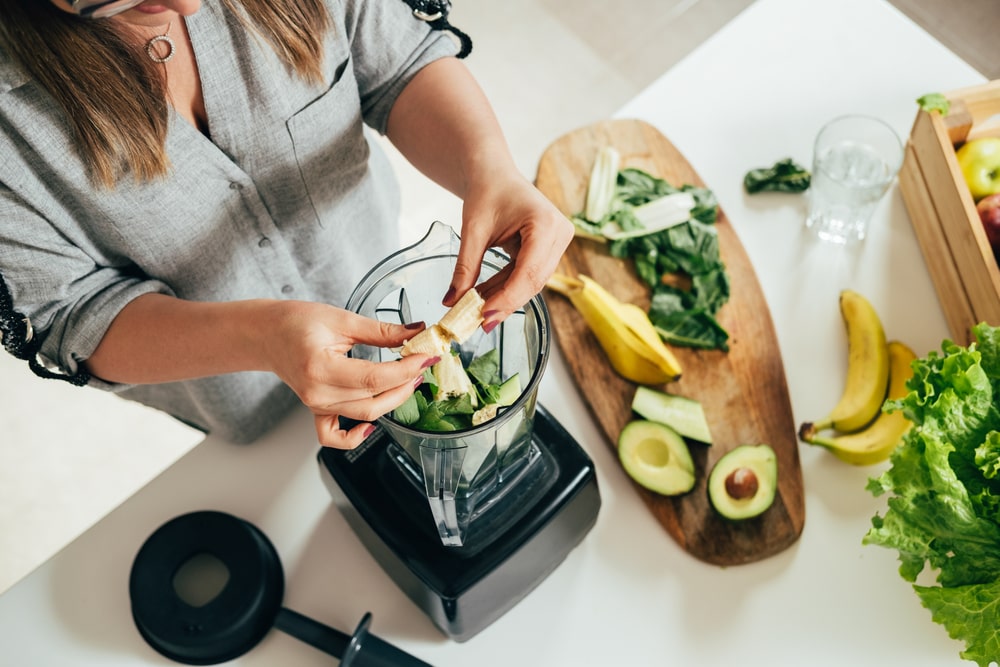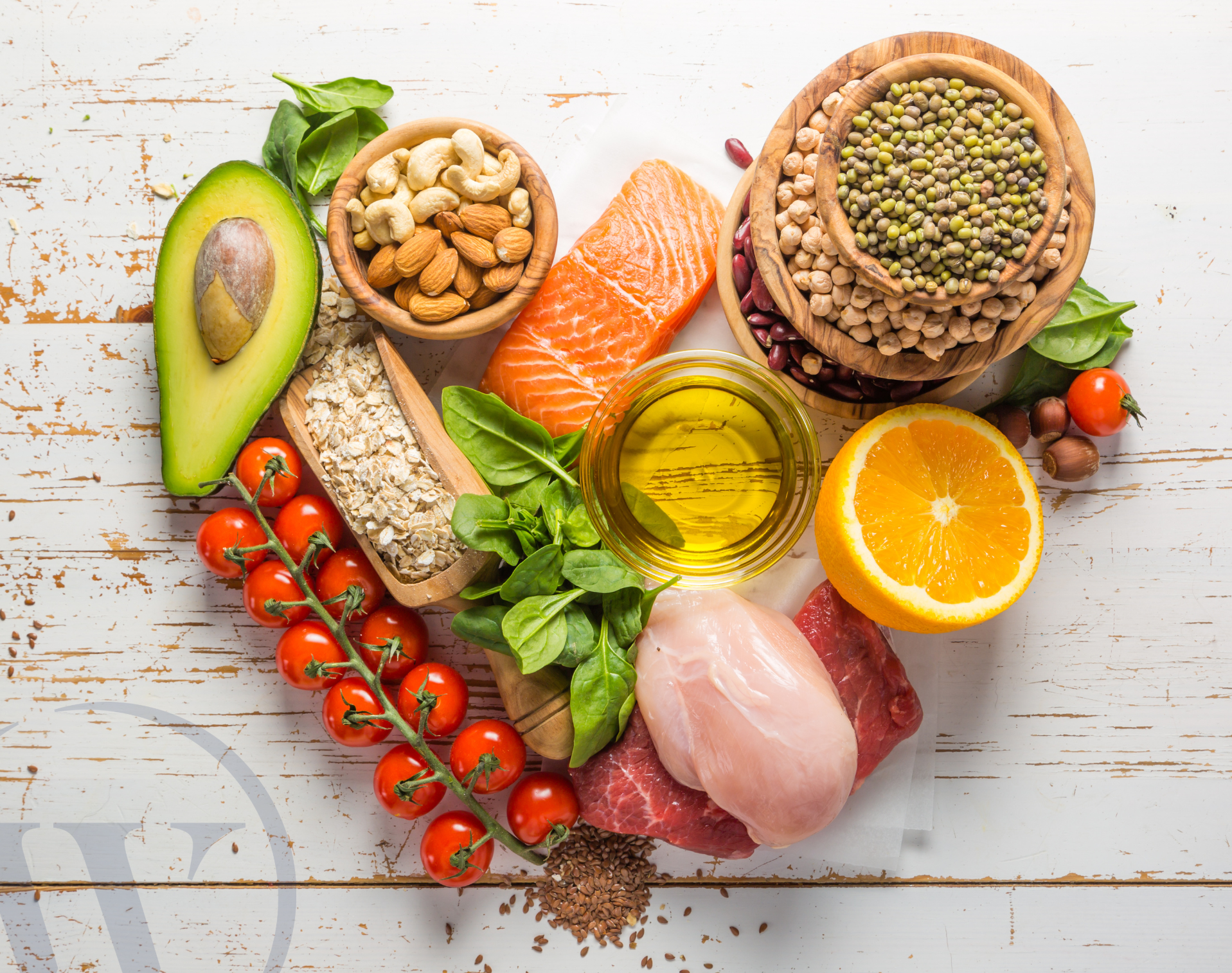Whatever your age, taking steps to care for your heart is key to good health and wellbeing. Doing so can also help lower your risk of developing certain conditions such as high blood pressure, high cholesterol and heart disease.
Up to 80% of cardiovascular events are caused by lifestyle factors, with the two most important being exercise and nutrition. Get these on track, and you’re well on your way to a stronger and robust heart, which keeps you healthier for longer.
Thankfully, the heart is a relatively responsive organ, with improvements in function seen quickly with positive lifestyle changes, at whatever age you start! It’s never too late to start making changes to improve your lifestyle.
With the help of Dr Boon Lim, cardiologist and electrophysiologist at Welbeck Heart Health, we’re taking a look at some of the things you can do every day to help keep your heart healthy and strong.
Meet one of our experts
Eat a balanced, nutritious diet
A well-balanced diet plays a key role in supporting heart health. Fuelling your body with nutritious whole foods can help reduce inflammation in the blood vessels, help you maintain a healthy weight, and support the overall function of your cardiovascular system.
The food choices you make each day have a direct impact on blood pressure, cholesterol levels and even heart rhythm. By packing key nutrients into your meals and making mindful, but simple food swaps, you can take care of your cardiovascular health and avoid illness.

Here are a few things to focus on:
Get your recommended daily fibre intake
Fibre is a type of carbohydrate that your body can’t digest. It plays an essential role in heart health, primarily helping to lower both LDL (“bad”) cholesterol and blood pressure. Eating plenty of fibre can also help you reach and maintain a healthy weight, which is key to good heart health.
To increase your intake, add more high-fibre foods into your diet, such as whole grains (like oats, brown rice and wholemeal bread), legumes (beans, lentils and chickpeas), fruits (apples, berries and pears) and vegetables (broccoli, carrots and leafy greens). Making simple swaps like choosing wholegrain alternatives over white bread or pasta, or adding a handful of beans to soups and salads, is also a great way to sneak more fibre into your favourite dishes.
'In general, we should be aiming for at least 30 grams of fibre a day', says Dr Lim. 'For example, a cooked cup of broccoli provides 5 grams of fibre and an apple with skin provides 4g of fibre. Mixing and matching fibre intake is a great way to expand the variety of fruits, vegetables and wholegrains you consume, which will ultimately help regulate sugar and cholesterol metabolism.'
The more colours and variety, the happier your microbiome!
'Consuming more vegetables in general, or switching to a mainly plant-based diet, is excellent for your health, including your heart', Dr Lim explains. 'In an intricate dance between your gut microbiome (think of these as healthy gut bacteria which help keep your digestion in tip-top condition) and your heart, consuming a healthy diet of fibre enhanced by multicoloured, and multiple types of vegetables, fruits and nuts are a perfect way to prime your gut to support your heart health. Keeping your gut microbiome happy and healthy leads to better liver health, better heart and brain health, and overall improves your cardiovascular risk profile, reducing your risk of a heart attack or stroke.'
A caution about smoothies
On smoothies, Dr Lim explains, 'Those that claim to contain 'one of your 5 a day' are often highly concentrated forms of fruit sugars, which can have detrimental effects on sugar metabolism. Consider swapping that glass of orange juice for an orange. For the same weight, a glass of orange juice is going to contain twice as much sugar, which absorbs into the bloodstream quickly (causing a glucose spike) and a quarter of the fibre available in a fresh whole orange. Furthermore, it’s much easier to drink more fruit juice (i.e. gulping down 2 glasses of juice) thus doubling the dose of rapidly-absorbed sugar - which will eventually lead to sugar spikes (and potentially sugar crashes after) which start the reactive hunger that tends to occur 3 to 4 hours after your meal.'

Know your good fats from your bad fats
Fat has long been misunderstood, but not all fat-containing foods are harmful to your heart. Healthy fats, such as unsaturated fats, can help increase HDL (“good”) cholesterol and reduce LDL (“bad”) cholesterol when used in place of saturated or trans fats.
Good sources of healthy fats include avocados, nuts, seeds, oily fish (like salmon, sardines and mackerel), and olive oil. Eating small portions of these fats every day can help keep your heart ticking over like a well-oiled machine.
'Avoiding ingredients like partially hydrogenated oils, and looking for cold-pressed oils (olive, avocado, flax), or adding in healthy fat boosters such as chia, flaxseeds or almond butter to your bowl of yoghurt are sure steps to consuming healthy oils routinely', Dr Lim suggests.
Cut down on salt
Too much sodium (salt) in your diet can raise your blood pressure, which is a major risk factor for heart disease and stroke.
'Eating too much salt can cause hypertension, which often has no discernible symptoms, but remains one of the most deadly risk factors. Cutting back on salt is one of the simplest ways to reduce your blood pressure. Even small reductions make a huge difference', Dr Lim explains.
Most sodium in our diet comes from processed and packaged foods, rather than the salt shaker, so try to cook more meals at home when possible and choose fresh ingredients. You can also use more herbs and spices to flavour food instead of adding salt during cooking or before eating.
If you need to eat convenience foods now and again, make sure to check labels for sodium content - there are usually low-salt versions available. Swapping salty snacks for unsalted alternatives can also make a world of difference.
When not to cut down on salt
'There is a group of patients, typically those younger than 30, who are predisposed to low blood pressure (hypotension) and who may be susceptible to fainting or dizziness, which can be made worse by standing upright', says Dr Lim. 'If you suffer from dizziness and other symptoms related to diagnosed low blood pressure, then you may have vasovagal syncope, a medical term meaning fainting. To reduce your susceptibility to developing syncope, we would typically advise patients drink more fluids (2.5-3L a day) and to also up their salt intake to help increase their blood pressure. We suggest up to 2 teaspoons of salt, ideally the coarse-ground type, as a seasoning, rather than salty processed foods.'
Stay on the peripheries of supermarkets
Sharing his top food shopping tip, Dr Lim explains, 'The freshest of ingredients tend to be in the peripheries of supermarket aisles. In most supermarkets, making a left turn at the entrance takes you to the vegetable section, and heading to the back of the supermarket takes you to the fresh fish and meat counters - avoid the colourful aisles smack in the middle if you can, and read food labels. It’s a good idea to limit your intake of food which have incomprehensible labels, or ready meals which are typically salted more heavily than needed.'

Stay hydrated
Staying well-hydrated is not something you may think of straight away when it comes to keeping your heart healthy.
However, good hydration supports healthy blood circulation and helps your heart pump blood more easily throughout the body. Dehydration can make the heart work harder, and overall increase fatigue and dizziness, making you feel listless and tired.
'As a general rule, aim to drink around 6 to 8 glasses (1.5 to 2 litres) of fluid each day', says Dr Lim. 'Water is best, but other sources like herbal teas, mild or some caffeinated drinks (2 cups of coffee/tea is acceptable in most patients, depending on your tolerance of caffeine) are okay too. Avoid fruit juices and choose to have fresh fruit (laden with fibre, which slows absorption of sugar) instead!'
Move - every day
It’s well known that a sedentary lifestyle can lead to poor cardiac health. 'Exercise is the single most important lifestyle factor that promotes cardiovascular longevity', Dr Lim says. Physical activity strengthens the heart muscle, improves blood flow, lowers blood pressure and helps manage weight.
The major Heart Societies and Associations recommend a modest 150 minutes of moderate activity each week. This may sound daunting, but it can be broken down into 5 x 30-minute blocks and can be any kind of movement you like - think a brisk walk, a bit of gardening, a gentle yoga class, for example.
Taking a more granular approach to exercising for cardiovascular longevity, there are 4 major components:
Cardiovascular - incorporating movement, including zone 2 (low intensity) and zone 4 or 5 (high intensity) workouts
Strength training - to strengthen and maintain muscle mass
Flexibility - to maintain a range of moments
Balance - to prevent falls

'For cardiovascular exercise, having 80% to 90% of your exercise in zone 2 workouts (including brisk walking or cycling) means that you will be performing more gentle exercises. Zone 2 is defined as exercise which can be done whilst still being able to carry out a conversation (“talk test”), which is being short of breath but not gasping', Dr Lim explains.
'For those who can, and want to increase VO2 max (a longevity marker), which is the maximal amount of oxygen the cells in your body can consume during exercise, then performing high intensity interval training can be highly useful,' he says. 'This only needs to be done in 10% to 20% of your routine cardiovascular workouts to allow for your body to condition appropriately.'
Interval training means that during a workout, you would typically exercise at a very high intensity for an interval. For example, running or swimming at the fastest possible pace for 3 to 4 minutes, then slowing down again for 3 to 4 minutes to recover, before going again at maximal intensity for 3 to 4 minutes, and repeating the process 4 to 6 times during the workout. This specific form of training will eventually increase your VO2 max, which means your heart, lungs, and muscles become more efficient.
'Strength training may not necessarily come automatically with cardiovascular exercises, and you should ideally dedicate some time to working out your muscles 2 to 3 times a week,' Dr Lim says. 'Simple body weight exercises like push-ups, pull-ups, squats, straight leg raises, and squats are good starting points, but if you can use weights or join a gym, doing resistance weight training will build strength in your muscles, which will allow you to be less susceptible to frailty and falling when older.'
If time is limited, then making small steps (like performing 15 squats in between meetings in the office) or taking the stairs instead of escalators may be helpful ways to get in short bursts of high-intensity and cardiovascular exercises in the working day.
'For those who are pre-diabetic or diabetic, increasing muscle mass as a metabolic consumer of glucose/sugars, can be a healthy natural way to lower baseline sugars in the body, beyond modifying diet', Dr Lim shares.
Optimise your sleep
While regular activity is key to having a strong and healthy heart, rest and recovery also play a key role.
'Sleep, in particular being able to get a restful and rejuvenating sleep, is critical in helping the body recover and prepare itself for the next day’s stressors', Dr Lim explains. 'Without adequate sleep, there’s an increased risk of hypertension, inflammation, diabetes and ultimately cardiovascular events such as heart attacks.'
Most adults should aim for 7 to 9 hours of quality sleep each night. To improve your sleep, it can help to establish a consistent bedtime routine, avoid screens before bed, and create a cool, dark, quiet sleep environment.





